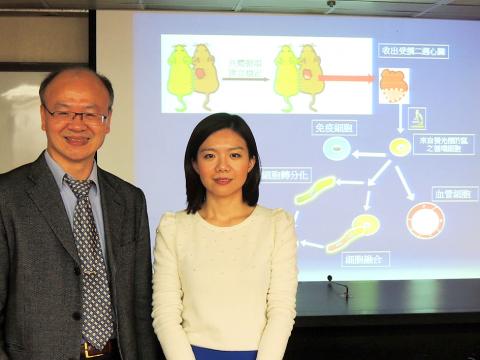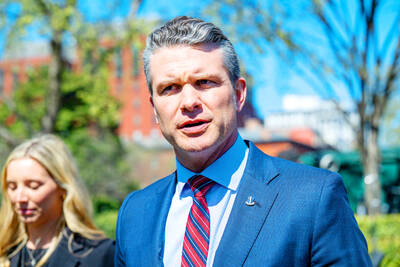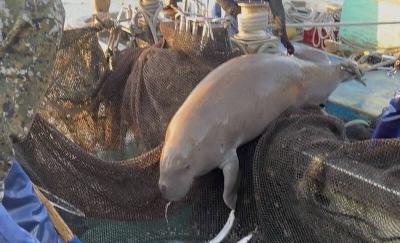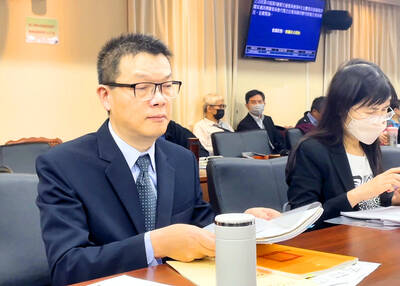Scientists from the Academia Sinica yesterday unveiled research findings that offer new hope for tools to combat heart failure.
They said five years of research showed circulating blood cells contribute to heart cell regeneration after a heart attack by fusing with heart cells (cardiomyocytes).
Team leader Patrick Hsieh (謝清河), an associate researcher at the Institute of Biomedical Science, said his team has discovered that heart inflammation triggered during the early stage of heart injury is essential for effective heart cell regeneration.

Photo: Tang Chia-ling, Taipei Times
However, their findings contradict those of a team led by former Stanford University researcher Bob Robbins — published in 2004 in the journal Nature — that said blood cells were unable to transform into heart cells, Hsieh said.
Robbins’ team used a parabiotic animal model — surgically joining two animals so that they share circulation, he said.
Hsieh said the difference in the two groups’ findings prompted him to experiment on the right timing to establish parabiotic circulation, so that early signals of inflammation in the heart can be promptly and effectively transmitted between test subjects.
By employing real-time molecular imaging in combination with Cre-Lox transgenic mice to pulse-trace blood stem cell genesis in the surgically conjoined animals, Hsieh’s team found that parabiosis between the rodents requires at least one week to become stabilized, he said.
Once that has been achieved, heart attacks can been induced in the recipient mice to achieve useful test results, Hsieh said.
The results showed that hematopoietic stem cells — the cells in charge of forming blood cells — of the label mouse begin to enter the recipient’s heart about one week after the recipient has had a heart attack, about which time the stem cells turn into heart cells by trans-differentiation and fusion with existing cells, Hsieh said.
He said the process, which also occurs in humans, begins at one week after a heart injury and is transient — something Robbins’ team failed to identify.
He said this team found two other flaws in the work by Robbins’ team — that from the beginning they used mice that had been given heart attacks, when parabiosis was still unstable, and then they waited up to a month before analyzing their results, which found that none of the label mice’s blood stem cells had circulated to the recipient’s heart.
Hsieh said his team’s discovery is significant because it successfully challenged the widely held view that no blood circulation cells can contribute to cardiomyocyte regeneration, as well as offering new prospects for preventing heart attacks.
Drugs developed based on his team’s discovery would significantly improve traditional therapies targeting heart failure, he said.
“Although we still have a long way to go, we hope to develop drugs to strengthen the process of hematopoietic stem cells entering the heart so that patients can benefit from natural, endogenous cardiomyocyte regeneration,” Hsieh said.

‘DENIAL DEFENSE’: The US would increase its military presence with uncrewed ships, and submarines, while boosting defense in the Indo-Pacific, a Pete Hegseth memo said The US is reorienting its military strategy to focus primarily on deterring a potential Chinese invasion of Taiwan, a memo signed by US Secretary of Defense Pete Hegseth showed. The memo also called on Taiwan to increase its defense spending. The document, known as the “Interim National Defense Strategic Guidance,” was distributed this month and detailed the national defense plans of US President Donald Trump’s administration, an article in the Washington Post said on Saturday. It outlines how the US can prepare for a potential war with China and defend itself from threats in the “near abroad,” including Greenland and the Panama

A wild live dugong was found in Taiwan for the first time in 88 years, after it was accidentally caught by a fisher’s net on Tuesday in Yilan County’s Fenniaolin (粉鳥林). This is the first sighting of the species in Taiwan since 1937, having already been considered “extinct” in the country and considered as “vulnerable” by the International Union for Conservation of Nature. A fisher surnamed Chen (陳) went to Fenniaolin to collect the fish in his netting, but instead caught a 3m long, 500kg dugong. The fisher released the animal back into the wild, not realizing it was an endangered species at

The High Prosecutors’ Office yesterday withdrew an appeal against the acquittal of a former bank manager 22 years after his death, marking Taiwan’s first instance of prosecutors rendering posthumous justice to a wrongfully convicted defendant. Chu Ching-en (諸慶恩) — formerly a manager at the Taipei branch of BNP Paribas — was in 1999 accused by Weng Mao-chung (翁茂鍾), then-president of Chia Her Industrial Co, of forging a request for a fixed deposit of US$10 million by I-Hwa Industrial Co, a subsidiary of Chia Her, which was used as collateral. Chu was ruled not guilty in the first trial, but was found guilty

DEADLOCK: As the commission is unable to forum a quorum to review license renewal applications, the channel operators are not at fault and can air past their license date The National Communications Commission (NCC) yesterday said that the Public Television Service (PTS) and 36 other television and radio broadcasters could continue airing, despite the commission’s inability to meet a quorum to review their license renewal applications. The licenses of PTS and the other channels are set to expire between this month and June. The National Communications Commission Organization Act (國家通訊傳播委員會組織法) stipulates that the commission must meet the mandated quorum of four to hold a valid meeting. The seven-member commission currently has only three commissioners. “We have informed the channel operators of the progress we have made in reviewing their license renewal applications, and